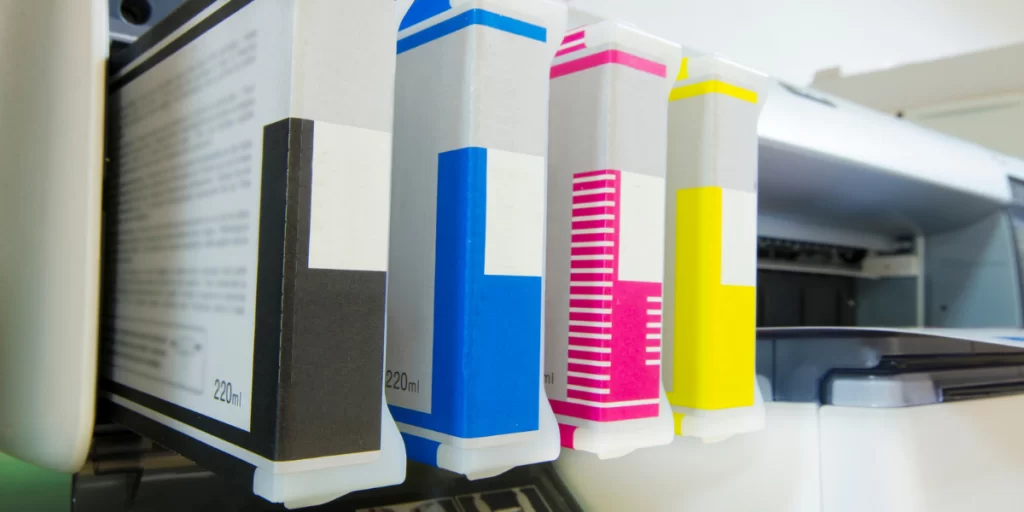DTF White Ink Problem | Improve Print Quality [Guide 2025]
DTF printing has gained popularity due to its cost-effectiveness and vibrant colors. However, like any other printing method, it has its challenges—one of the persistent issues that printers encounter is the DTF white ink problem.
White ink serves as a foundation for color vibrancy and opacity. Its unique properties also make it prone to various problems, ranging from clogging to inconsistencies in print quality.
Understanding these issues and their solutions is essential for optimal DTF printing results. Ready to know?
Table of Contents
Common DTF White Ink Problems
To address these problems, you’ve to understand the bottom causes. Several factors contribute to these issues, including improper ink viscosity, inadequate maintenance of the printing equipment, and suboptimal curing conditions.
Failure to tackle root causes leads to inconsistent and poor-quality prints. This will not just dissatisfy your customers but leave a negative impact on your business reputation. Common DTF white ink problems are:
Clogging
White ink is more viscous than color ink. Therefore, it’s more susceptible to clogging in the printhead nozzles. It leads to inconsistent ink flow, resulting in gaps or streaks in the printed white layer.
Sedimentation
White ink particles tend to settle over time, especially when left unused for extended periods. This sedimentation can cause uneven ink distribution and affect print quality.
Incompatibility
Using incompatible ink formulations or mixing inks from different brands causes chemical reactions that affect the ink’s properties. It brings in issues like poor adhesion or color shifts. Poor adhesion causes the white ink to peel off the fabric and leave an undesirable finish.
Ink Density
White ink has to be applied at just the right density. Excessive ink bleeds or cracks while inadequate ink is washed out. Temperature and humidity fluctuations also impact white ink’s viscosity and drying properties. These inconsistencies directly affect the print quality.
Improper Ink Circulation
This happens due to several factors: improper ink mixing and shaker setting. When ink is not properly shaken well before printing, it will not properly layout on the fabric. If you use a DTF powder shaker, adjust the powder flow settings for optimal white ink coverage. A light to medium application is a good starting point.
Weak White Ink Coverage
This issue can be caused because of several factors. These include clogged dampers (filters in the ink line), using the incorrect type of DTF film for your ink, or adjusting your RIP software settings (the software that translates your digital design onto the fabric).
Incorrect Curing Profile
The curing process involves giving heat to the ink to set it onto the substrate. It’s a very critical step in printing. An improper curing profile for white ink might result in undercured ink that appears dull or washes away during pretreatment.

Solutions to DTF White Ink Problems
- Regular Maintenance: Regular DTF printer maintenance is basic to avoid DTF white ink problems. Clean the printhead and ink cartridges to prevent clogging. Use the printer’s built-in cleaning function or perform manual cleaning with appropriate cleaning solutions.
- Shake Well Before Use: Shake the white ink cartridge thoroughly before printing to re-disperse any settled particles. It ensures a consistent ink flow and even distribution.
- Use Compatible Inks: Always use high-quality inks specifically designed for direct-to-film printing and avoid mixing inks from different brands.
- Check Ink Expiry: Before going toward the printing task, check the recommended shelf life of cartridges. Expired ink may not perform well.
- Controlled Environment: Maintain a stable temperature and humidity level in the printing area to minimize the impact of environmental factors on ink performance.
- Software Updates: Keep the printer’s firmware and software up to date to ensure compatibility with the latest ink formulations and printing techniques.
- Calibration and Settings: Ensure proper calibration of the printer and adjust settings like ink density and drying time according to the specific ink and substrate being used.
- Test Prints: Always run a few test prints with different settings before working on a final project. This is how you can identify the white ink problem without wasting materials.
- Clean Work Environment: Maintain a clean work area to minimize dust or debris contamination that affects the print quality and graphics of your designs.
- Storage Condition: Always store your DTF white ink in a cool, dry place to prevent ink segmentation and clogging issues.
- Adjust Ink Parameters: Experiment with ink density, curing temperature, and curing time to get the best settings for your DTF printer and fabric.

Preventive Measures
“True prevention is not waiting for bad things to happen, it prevents things from happening in the first place”. Same rule applies in the case of DTF white ink problems. To combat this, first use the DTF printer recommended by an expert. Then you have to follow these preventive measures:
- Regularly use the printer to prevent ink from settling and clogging the printhead. If plan to not use it for a long time, use a moisturizing device, so the ink of the printhead does not solidify.
- Store white ink cartridges in a cool, dry place away from direct sunlight to maintain their optimal condition.
- Establish a regular maintenance schedule for cleaning and checking the printer components to prevent issues from arising.
Conclusion
By understanding root causes and implementing effective solutions and preventive measures, you can overcome DTF white ink problems. Remember, maintaining your equipment and using compatible, high-quality inks are key to avoiding DTF printing problems and a smooth printing experience.
